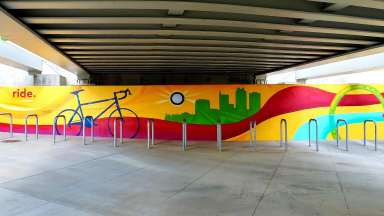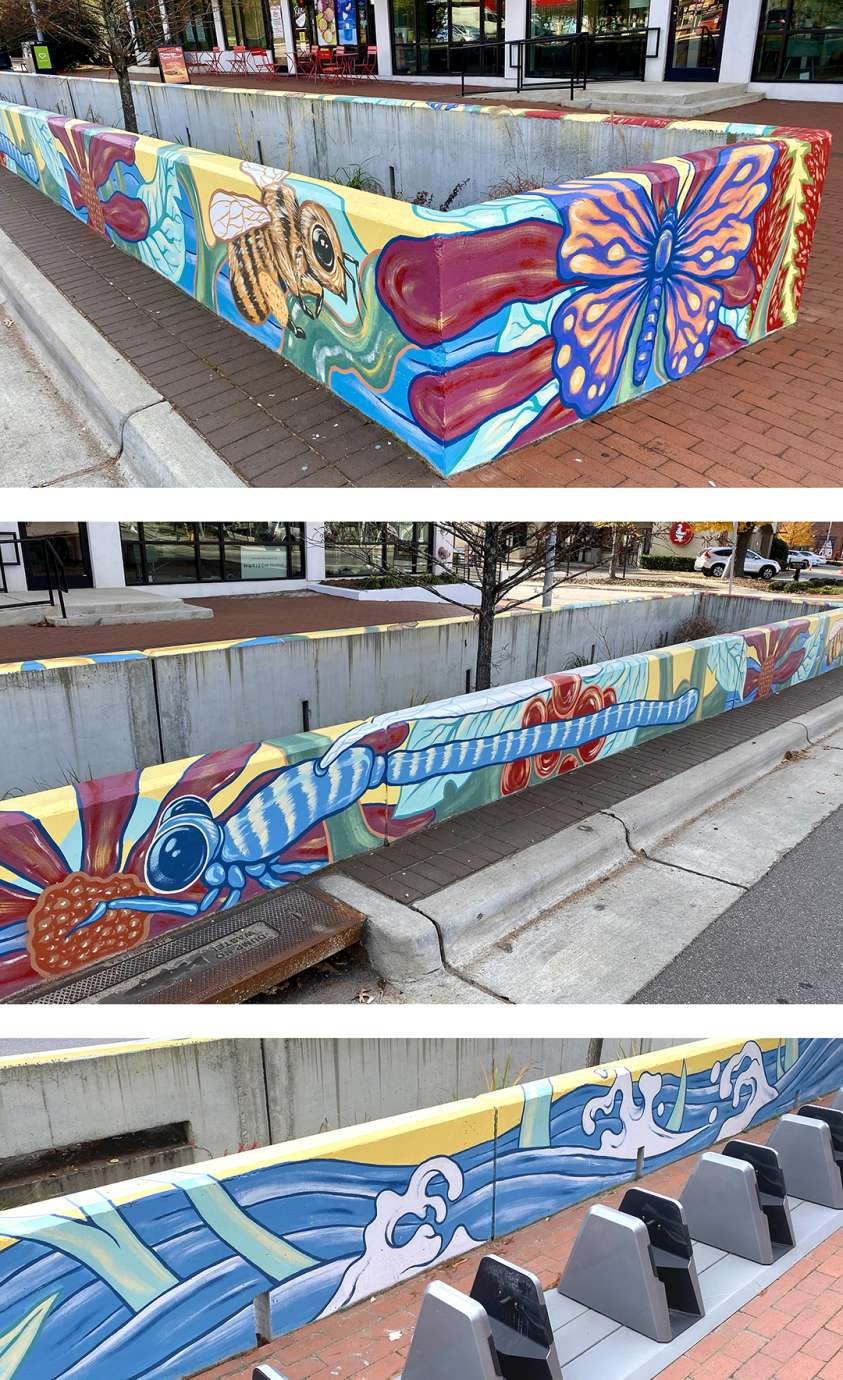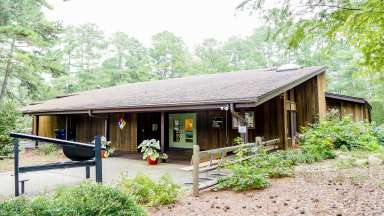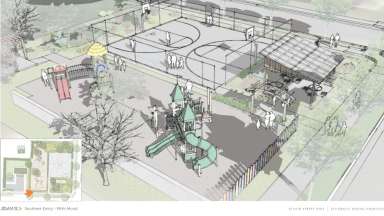Jump To:
Things to Consider
Location
- If you have a specific building or retaining wall in mind, let us know on your request form
- Contact surrounding businesses, residents, and property owners. Letting community members know about your project will help build support and create a successful project
- Check if the wall is in a historic district using iMAPS and turning on the Historic Properties layer. Walls in historic districts will require additional permissions
- Privately owned walls can be painted with artwork under first amendment rights and do not require permission from the City. However, if your design is a billboard or sign (i.e., if the content of the design references a business or contains logos), then you will need to get a sign permit for the privately owned wall
Buildings
- To determine who owns a wall or building, use iMAPS. Click on the property location or type in the address to see who owns the building
- Community centers and parks usually have walls that are the perfect canvas for murals
Retaining Walls
- The City can only grant permissions for retaining walls that are located on City-owned streets
- Determine if the retaining wall is owned by the City using the Powell Map, which marks City-owned streets in blue
- If a street is owned by the state of North Carolina, Raleigh Arts staff can connect you with the NC Department of Transportation's public art contact.
- Determine if the retaining wall is owned by the City using the Powell Map, which marks City-owned streets in blue
Cost
- A small mural around 10’ x 12’ usually costs $8,000 - $12,000 (including paying for the materials and the artist’s time)
- Medium-sized walls can run $15,000-$25,000
- Large walls can cost $25,000 to $100,000 depending on the artists’ reputation and the size of the wall
- This type of project does not include funding from Raleigh Arts. Check out other funding opportunities
Facade Grants
- Facade Rehabilitation Grant Program: Business owners can qualify for up to $5,000 or up to $10,000 for exterior improvements like lighting, murals, awnings, and art if the location is in an Economic Development Priority Area or the University Village District
Design
- Artwork must include the artist's credit. Crediting guidelines for temporary art in public spaces include:
- Hashtags and artist signatures are allowed
- No more than two hashtags are allowed
- No logos are allowed
- Hashtags and artist signatures should be sized so they are less than or equal to 2% of the painting surface. For smaller artworks, the artist can choose to use up to 2” x 24” instead to retain legibility. The artist has the digression to make the hashtag/signature smaller if they choose






